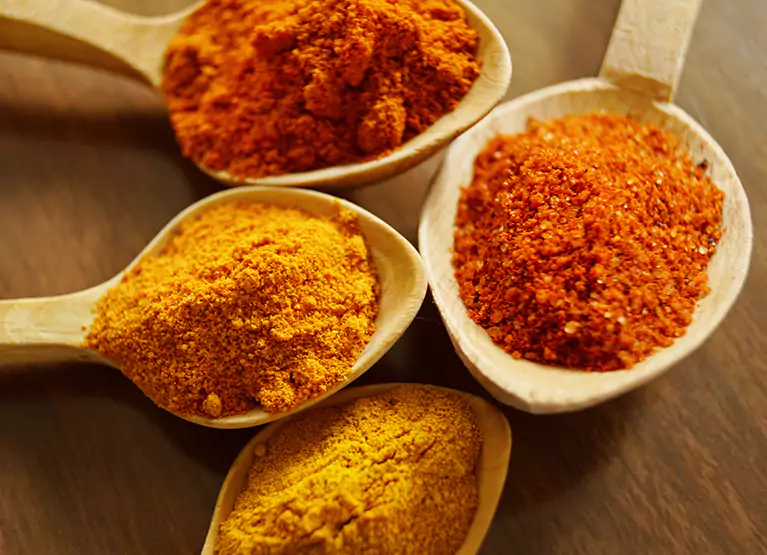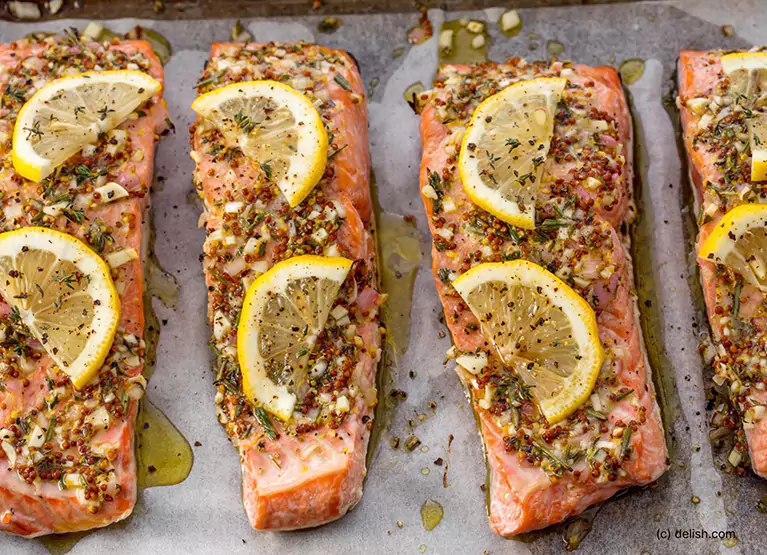Must-Have Kitchen Staples for Healthy Eating

Key Takeways
Whether you’re trying to eat healthy or just wondering what to stock up on at your next grocery shopping trip, a well-stocked kitchen is the key to making healthy eating choices.
Filling your kitchen with foods that are high in nutrients like fiber and protein can help you feel more satisfied and satiated after eating.
Plus, having healthy choices on hand can help you limit your intake of processed foods lacking in nutrients, making it easier to eat healthy foods and reach your health goals.
Let’s explore some of the best kitchen staples that you should always aim to have on hand to make healthy eating easier.
How to Tell if You Need a Pantry Purge

Foods that are highly processed tend to be easier to keep on hand since they typically last longer, but unfortunately, they are often also high in ingredients like refined carbohydrates, added sugars, sodium, and trans fats.
While not all highly processed foods are inherently bad for you, if your kitchen is stocked with lots of these items, it may be time for a purge.
Consuming too many highly processed items on a regular basis can contribute to the development of conditions like high blood pressure, diabetes, obesity, and even cancer, which is why keeping them out of sight can be a great way to start your health journey.
Identifying Highly Processed Foods
So how can you tell which foods are highly processed?
Well, you can safely bet that whole foods like fresh produce, legumes, and fresh cuts of meat are not highly processed. But it gets more murky when looking at other types of packaged goods like cereal, bread, and baked goods.
The best way to identify a highly processed food is by checking its list of ingredients. When looking through your fridge or pantry, do any of your foods have ingredients that you wouldn’t find in an average kitchen?
These can include hydrolysed proteins, high-fructose corn syrup, casein, hydrogenated oil, maltodextrin, whey protein, and soya protein isolate, among others.
Instead, try opting for unprocessed whole foods like fresh fruits and vegetables, nuts, legumes, lean meats, seafood, and whole grains on your next grocery trip.
What to Keep in Mind Before Stocking Your Kitchen Pantry

So if you’ve decided to limit the amount of highly processed foods in your kitchen, what should you eat instead?
The United States Department of Agriculture’s Dietary Guidelines for Americans, 2020-2025 advise to include fruits and vegetables, whole grains, protein, oils, and low-fat dairy or fortified dairy alternatives in your diet.
According to these guidelines, half of every meal should be made up of whole fruits and vegetables. The USDA also advises that you vary your proteins and vegetables and get at least half of your grain intake from whole grains. It is recommended to limit your consumption of sodium, added sugars, and saturated fats.
Following these dietary guidelines and incorporating more nutrient-dense foods can lower your risk of all-cause mortality, high cholesterol, cardiovascular disease, obesity, certain cancers, and type 2 diabetes, among other things.
The 11 Must-Haves in a Healthy Kitchen
1) Fresh or Frozen Fruits and Vegetables

Fruits and vegetables are a crucial component of a healthy diet because of their vitamin, mineral, antioxidant, and fiber content. Aim to stock up on a diverse range and color of fruits and veggies such as sweet potatoes, apples, celery, berries, eggplant, bananas, and leafy greens.
Studies show that including many different fiber sources in your diet leads to a more diverse microbiome in your gut. This can aid digestion and support a healthy immune system, and many other systems that impact your overall health.
A 2015 study found that frozen fruits and vegetables generally retained the same vitamin content as fresh varieties, which makes these freezer staples even more versatile and convenient to keep on hand. Leafy greens like kale, spinach, and chard all freeze well, as well as squash, broccoli, cauliflower, and carrots.
Most fruits also freeze well and are great additions to smoothies. These foods are also typically great sources of antioxidants, which can help prevent chronic health conditions like heart disease, diabetes, and inflammation.
2) Beans and Lentils
Dried or canned beans and lentils are great pantry staples because of their affordability, high nutrient content, and long shelf life. Beans and lentils are both types of legumes.
Legumes are high in potassium, magnesium, fiber, protein, iron, copper, B vitamins, zinc, and phosphorus. A diet rich in legumes may prevent diabetes and hypertension, help you manage your weight, and lower cholesterol.
3) Fish

Fish is an excellent source of protein because of its omega-3 fatty acid content. Omega-3 fatty acids prevent heart disease and relieve inflammation.
Tuna, salmon, trout, sardines, and anchovies are easily found in grocery stores. Fresh fish can be stored in the fridge or the freezer, and canned or tinned fish can be conveniently stored in the pantry.
4) Whole Grains
Whole grains are another great pantry staple to keep on hand and are a versatile option for dishes ranging from a savory stir-fry to overnight oats.
These foods include brown rice, quinoa, barley, farro, bulgur, buckwheat, oats, rye, spelt, and wheat berries, among others. Adding whole grains to a meal is a great way to boost your fiber intake, and they may even help reduce your risk of inflammation and type 2 diabetes.
5) Nuts and Seeds

Nuts and seeds such as unsalted almonds, peanuts, walnuts, sunflower seeds, and cashews, along with natural or organic seed or nut butters such as almond butter, sunflower butter, and peanut butter are a great choice for a healthy pantry.
Eating nuts and seeds may lower your risk of cardiovascular disease and coronary heart disease. They may also prevent metabolic syndrome and help you maintain a healthy weight.
Opt for unsweetened, low sodium varieties of these foods when possible, and make sure to watch your portion sizes as these tasty snacks can be high in calories.
6) Apple Cider Vinegar
Apple cider vinegar is a common pantry item that has numerous health benefits.
One small study showed that apple cider vinegar had a positive effect on fasting blood sugar in people with type 2 diabetes. Other research has shown that vinegar has the potential to improve glycemic control, may have anti-inflammatory properties, and antidiabetic and antioxidant effects.
Apple cider vinegar can be stored in your pantry for up to a year after being opened, and can be added into many common recipes and even teas and other drinks.
7) Healthy Oils

Healthy oils are a crucial part of a well-stocked kitchen. Olive oil, avocado oil, and coconut oil are all examples of healthy, unrefined oils. Each type of oil has a unique flavor profile and lots of health benefits.
For example, olive oil has been known to improve cardiovascular health; prevent diabetes, obesity, and insulin resistance; and have anti-inflammatory and antioxidant properties.
Avocado oil may improve joint inflammation, help you absorb nutrients from other foods, and may have a positive effect on cardiovascular health.
8) Fermented Foods
There are many health benefits associated with eating fermented foods like sauerkraut, kimchi, and pickles. Plus, these flavorful foods have a long shelf life and can be stored for long periods of time.
A 2019 review of evidence found that fermented foods have higher nutritional value and antioxidant activity than their non-fermented counterparts.
Because of their probiotic content, this same review noted that these foods may even contribute to a better sense of well-being due to their positive effect on the gut microbiome.
9) Honey
Honey can be a great, natural alternative to refined sugar. Honey provides amino acids, protein, enzymes, essential minerals and vitamins, and polyphenols.
It is antimicrobial and has been shown to protect against obesity, diabetes, hypolipidemia, and hypotension. However, excess sugar consumption can have inflammatory properties and raise glucose above desirable levels, so it’s a good idea to consume honey in limited quantities.
10) Condiments

Condiments are a must-have to add extra flavor to all kinds of foods, and some even have high nutritional content.
Mustard is a great example of a healthy condiment because it often contains turmeric, a spice that is high in antioxidants. Similarly, nutritional yeast is popular among vegans due to its cheesy flavor and antioxidant content. This nutritious flavor booster is often fortified with B-vitamins.
Hot sauces made from chili peppers are great for adding spice to a meal. They also contain capsaicin, which has been shown to have anti-inflammatory and analgesic properties.
Tahini is a tasty addition to a dip or salad dressing. It’s made from ground sesame seeds, which can have a positive effect on blood sugar.
11) Spices and Herbs
Spices and herbs are crucial to add flavor and depth to a dish, and some even have medicinal properties. Sage, oregano, ginger, cinnamon, peppermint, black pepper, and turmeric are all great options to keep on hand.
- Cinnamon is an antioxidant and anti-inflammatory that may play a role in preventing diabetes.
- Black pepper may have a positive effect on blood sugar levels.
- Oregano has antifungal and antibacterial properties, and acts as an anti-inflammatory.
- Ginger is known to be effective as a treatment for nausea, and may also lower blood sugar levels.
5 Kitchen Staple Recipes to Get You Started
Wondering what healthy meals to make once you’ve stocked up on these kitchen staples? Here are a few recipes to get you started.
Nutrient-Dense Mediterranean Bowl by Olive and Mango

This healthy grain bowl includes whole grains, fresh vegetables and herbs, and heart-healthy olive oil. It’s full of vitamins, minerals, and fiber, and quick to whip together and can even make a great lunch on the go! Add in some lean grilled chicken breast or a few sautéed tofu cubes for extra protein.
Ingredients
- 2-3 tablespoons extra-virgin olive oil
- ¼ cup parsley, finely chopped
- 3 tablespoons dill, finely chopped
- 2 sprigs of chives
- 1 large white onion
- 1-2 cloves of garlic, minced
- 2-3 cups of spinach, chopped
- 1½ cups of brown rice
- 3 cups broth (or water)
- Juice from one lemon (optional)
Tasty Sardine Pate by Irena Macri
This recipe is a great way to use up pantry staples like tinned sardines and sun-dried tomatoes and makes for a delicious afternoon snack. Sardines are a great source of omega-3 fatty acids and are also high in protein and a number of vitamins, making this a tasty and nutritious snack to throw together.
Ingredients
- One (120 gram) can of sardines
- 4 sun-dried tomato halves (preserved in olive oil)
- 1-2 tablespoons mayonnaise
- 1 tablespoon chopped spring onion or red onion
- 1 tablespoon lemon juice
- 1 teaspoon hot sauce or Sriracha (optional)
Creamy Coconut Lentil Curry by The Endless Meal

Made from pantry staples, this curry is the perfect healthy comfort food. It’s full of beneficial spices like turmeric and ginger, and the lentils are a great source of fiber and protein to help keep you feeling satiated.
Ingredients
- 1 tablespoon coconut oil
- 1 tablespoon each: cumin seeds and coriander seeds
- 1 head garlic, chopped (10-12 cloves)
- 28 ounce can of crushed tomatoes
- 2 tablespoons ginger, chopped
- 1 tablespoon turmeric
- 2 teaspoons sea salt
- 1 cup dried brown lentils
- 1-2 teaspoons cayenne powder, optional
- 3 cups water
- 15 ounce can coconut milk
- A few handfuls of cherry tomatoes
- 1 cup chopped cilantro
Bean and Barley Soup by BBC Good Food
This soup combines whole grains, canned beans, and vegetables for a hearty and healthy meal. The herbs and veggies can easily be chopped up and stored in the freezer for convenience. Canned chickpeas and tomatoes also have a long shelf life, making this a great quick pantry meal option.
For an extra boost of protein to help round out this meal, you may try adding some shredded chicken or chunks of tofu to the pot.
Ingredients
- 2 tablespoons vegetable oil
- 1 large onion, finely chopped
- 1 fennel bulb, quartered, cored and sliced
- 5 garlic cloves, crushed
- 1 can chickpeas, drained and rinsed
- 2 cans chopped tomatoes
- 600 milliliters vegetable stock
- 250 grams pearl barley
- 1 can butter beans, drained and rinsed
- 100-gram pack baby spinach leaves
- Grated parmesan, to serve
Easy Broiled Salmon by Delish

This simple dish contains mustard, fresh herbs, and heart-healthy salmon. Give it a try for a healthy dose of omega-3 fatty acids! You can store your salmon in the freezer and defrost before cooking to quickly throw this meal together.
Ingredients
- 4 (4 ounce) salmon fillets
- 1 tablespoon grainy mustard
- 2 cloves garlic, finely minced
- 1 tablespoon finely minced shallots
- 2 teaspoons fresh thyme leaves, chopped
- 2 teaspoons fresh rosemary, chopped
- Juice of ½ lemon
- Salt and pepper
- Lemon slices, for serving
Find the right Nutrisense programto turn insight into progress.
Go Beyond Glucose Data with Nutrisense
Your glucose can significantly impact how your body feels and functions. That’s why stable levels are an important factor in supporting overall wellbeing. But viewing glucose isn't enough. Nutrisense, you’ll be able to learn how to use your body's data to make informed lifestyle choices that support healthy living.
One-to-one coaching
Sign up to access insurance-covered video calls to work with a glucose expert: a personal registered dietitian or certified nutritionist who will help tailor your lifestyle and diet to your goals.
Monitor and measure what matters
With the Nutrisense CGM Program, you can monitor your glucose with health tech like glucose biosensors and continuous glucose monitor (CGM)s, and analyze the trends over time with the Nutrisense App. This will help you make the most informed choices about the foods you consume and their impact on your health.
Find your best fit
Ready to take the first step? Start with our quiz to find the right Nutrisense program to help you take control.

Heather is a Registered and Licensed Dietitian Nutritionist (RDN, LDN), subject matter expert, and technical writer, with a master's degree in nutrition science from Bastyr University. She has a specialty in neuroendocrinology and has been working in the field of nutrition—including nutrition research, education, medical writing, and clinical integrative and functional nutrition—for over 15 years.


.webp)

